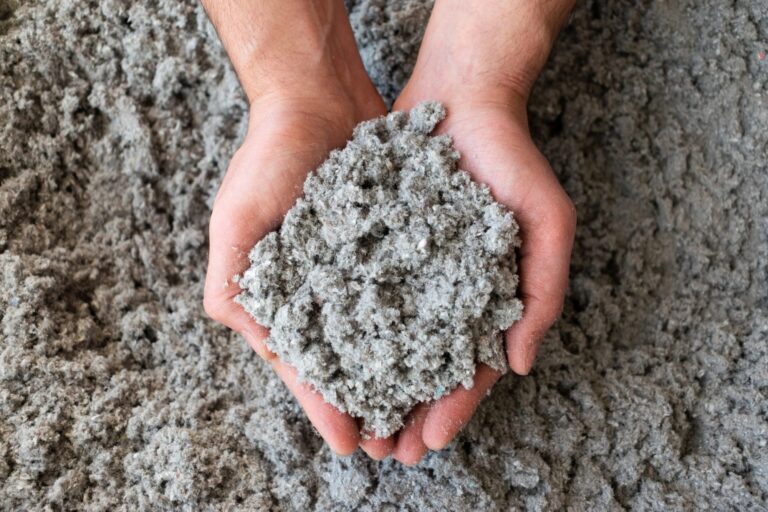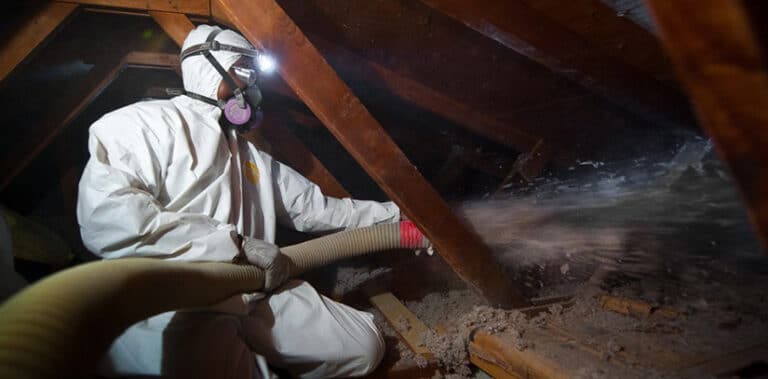Sustainable Materials – Cellulose Insulation
This week, we’re starting a new blog series. We’ll be looking at some of the modern building materials and how they compare with more traditional materials. What are the pros and cons of these newer, modern alternatives and how sustainable and healthy are they really. For the first several posts, we’ll be focusing on insulation, first up cellulose insulation.
From an operational energy point of view, the more insulation the better. But if we also consider the embodied energy required to make the insulation, then the story becomes more nuanced. See my blog “Embodied energy and operational energy” to better understand the difference between the two.
Cellulose Insulation
Cellulose – Cellulose is one of the oldest insulation materials in use today. Interesting historical side note: Thomas Jefferson built his home in 1772 using a form of cellulose. Modern cellulose insulation made from recycled paper products really started in the 1950’s. But it wasn’t until the energy crises of the 1970’s that demand started to increase.
Benefits of Cellulose
Cellulose has many important pros to its credit, with a few cons. On the pro side, it’s inexpensive to purchase and inexpensive to install (especially in attic spaces). Since it’s made from recycled paper products, it keeps millions of tons of waste products out of the nation’s landfills. The energy required to turn waste paper into cellulose insulation is very low, also the embodied energy or carbon is low. It has a relatively high R-value, making it a good insulator.
Cellulose has an R-value of 3.4/inch (loose and unsettled), much better than most other common insulation materials. To achieve code minimum insulation in the ceiling (R-value=49) along the Colorado front range, you’d need 15 inches of cellulose. The cellulose costs about $1.05 per SF at the big box stores, plus installation. For better performance, we’d want to consider R-60 to R-70, or more.
Insulation installers, often blown in cellulose dry using an insulation blower, see figure below. This method of installation is particularly effective at filling up all the cavities between ceiling joists. Blown-in cellulose also has the advantage that additional insulation can be easily be added to the top of existing insulation. Installers can also blow in the cellulose wet, which makes it stick to vertical surfaces, making cellulose viable for walls. Note: blowing in cellulose wet requires careful control over the water content, and the wall assembly must to be able to dry.
Disadvantages of Cellulose Insulation
However, there are downsides to cellulose. First and most important, cellulose is a paper product, meaning it will burn. To reduce the flammability of cellulose insulation, manufacturers will coat the fibers with a mixture of boric acid and ammonium sulfate. These two chemicals give the cellulose the highest (Class I) fire safety rating. The ancient Greeks used boric acid as a cleaner. In modern times, people use antibiotic and antifungal creams for the treatment of minor cuts, burns, and athlete’s foot, containing boric acid. Industry uses boric acid as a preservative, an insecticide, as well as many other uses. However, boric acid is toxic if ingested or inhaled in sufficient quantity. Long term exposure to boric acid is known to cause kidney damage; however, safely hidden behind drywall this should not pose a problem for most people.
Manufactures often use ammonium sulfate along with the boric acid to further enhance fire resistance. Farmers commonly use ammonium sulfate as fertilizer. The food industry also uses ammonium sulfate as a food additive to regulate the acidity of flour and breads. The U.S. FDA and the European Union, generally recognize ammonium sulfate as safe.
Dust
Probably the biggest health concern surrounding cellulose is simple dust. Cellulose is very dusty, with very small particle sizes. The installer can create billowing clouds of dust during the blowing process. The dust can irritate the respiratory system, which the U.S. Occupational Safety and Health Administration (OSHA) considers a health risk. The wearing of proper protective equipment is critical.
Once the building crew has safety ensconced the insulation behind drywall, the dust should not be a concern; assuming the installation and drywall installers have properly sealed everything. For home occupants with existing lung problems, such as asthma, extra care is prudent.
Moisture
The biggest potential problem with cellulose is moisture. If the cellulose gets wet, its insulating value goes down – dramatically. If the house was properly designed, built, and maintained, the cellulose will dry out over time and regain its lost R-value. However, if the house was not properly designed, built, or maintained, then not only will the cellulose not insulate, but much worse – rot will begin to occur. Black mold could begin to grow, which is a significant health concern. The boards in the walls or roof could also begin to deteriorate, causing significant structural damage.
How green and sustainable is cellulose? The manufacturing of the cellulose itself from recycled paper is very green and sustainable. However, to make it fire safe, it requires boric acid and ammonium sulfate. Manufactures use boron containing minerals, such as borax, to manufacture boric acid. Mining companies operate huge open pit mines to extract borax.
Next week we’ll turn our attention to fiberglass insulation.


